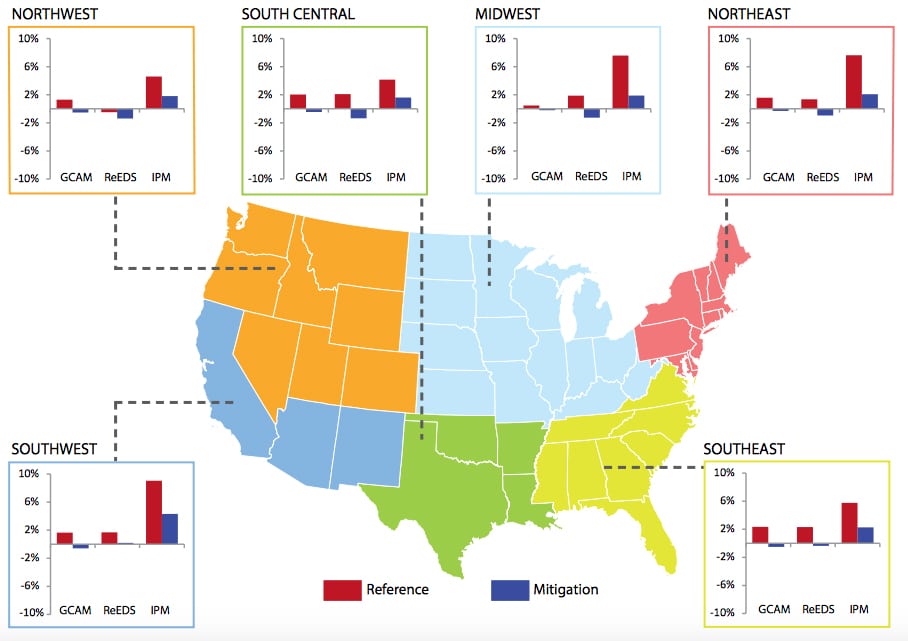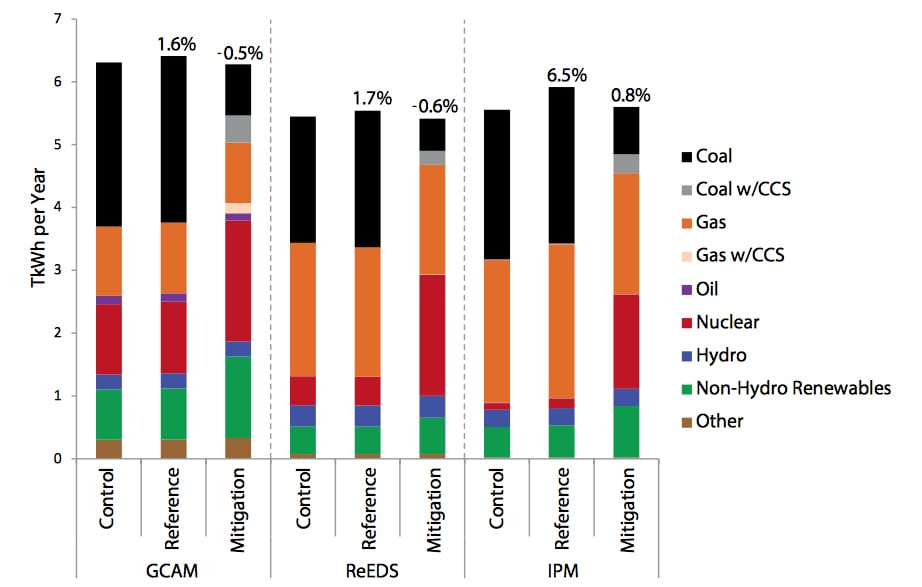White House Warns Climate Change Inaction Could Result in Higher Power Demand and System Costs
Taking action on climate change could reduce electricity demand between 1.1% and 4% and save the U.S. $10 billion to $34 billion in power system costs by 2050, says a new report released by the White House and the Environmental Protection Agency (EPA) touting the U.S. economic, health, and environmental benefits of global climate action.
The June 22–released report, which summarizes results from the “‘peer-reviewed” Climate Change Impacts and Risks Analysis (CIRA) project, is titled “Climate Change in the United States: Benefits of Global Action.” It essentially examines how future impacts and dangers of climate change across six sectors in the U.S.—health, infrastructure, electricity, water resources, agriculture and forests, and ecosystems—can be avoided or curbed with global action.
Posing two scenarios, the report compares a future where global warming has been limited to 2C (3.6F) to a future with no action on climate change—a scenario that could ultimately see global temperatures rise by 9F this century, according to CIRA.
Among its major findings are that global action now leads to greater benefits over time, that it would avoid costly damages in the U.S., and that in some sectors, adaption can substantially reduce the impacts of climate change.
A Focus on the Power Sector
The report assesses the impact of rising temperatures on U.S. power demand, system costs, and the generation mix needed to meet surging demand across the U.S. through 2050.
However, the EPA’s electricity supply analysis does not include the effects of climate change on hydropower and water availability for thermoelectric power generation. “Additional work is necessary to further evaluate climate change impacts on electricity supply, particularly the effects of extreme heat events and storm damage on capacity and reliability,” it said in a statement.
Its key finding concerning power demand is unsurprising: Without global greenhouse gas (GHG) mitigation, the report says, rising temperatures will likely result in higher power demand across the country, owing to the increased need for air conditioning.
By 2050 (compared to 2005), heating degree days (HDDs) will decrease across the U.S. by 18% to 29% on average, while the increase in cooling degree days (CDDs) is highest in the Northeast (68%, on average) and Northwest (71%), the reference scenario shows.
But if global GHG emissions reductions are achieved as outlined in the mitigation scenario, cooling demand will fall, the report claims (Figure 1).
1. Change in regional electricity demand in 2050 with and without global greenhouse gas mitigation. Change in regional electricity demand for the reference and mitigation scenarios relative to a control (no temperature change). Results are presented for six regions and for each of the three models used in the analysis: Global Change Assessment Model (GCAM), Regional Electricity Deployment System Model (ReEDs), and Integrated Planning Model (IPM). Source: EPA
An Impact on Electricity Supply
Also predictably, all three power sector models under the reference scenario report find that warmer temperatures and the higher demand for cooling will require a higher projected electricity supply.
But it posits that higher demands under the reference scenario could increase system costs by 1.7% to 8.3% above the control. Still, that’s less than under the mitigation scenario, which would see costs increase by 2.3% to 10% above control (or 0.6% to 5.5% above reference scenario costs). The higher costs in the mitigation scenario are mostly pegged on the altered generation mix to reduce GHG emissions.
Pointedly, the CIRA analyses foresees that a large amount of carbon dioxide reductions in the U.S. under the mitigation scenario will occur in the power sector—and that will change the nation’s power mix. By 2050, all three models under the mitigation scenario project substantial reductions in coal generation and expanded generation from nuclear and renewables (Figure 2).
2. Electricity generation by technology and scenario in 2050 with percent change in generation from control. Source: EPA
—Sonal Patel, associate editor (@POWERmagazine, @sonalcpatel)

